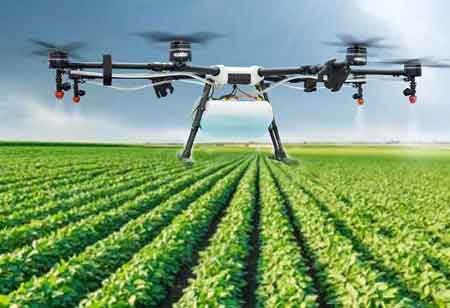Thank you for Subscribing to Agri Business Review Weekly Brief
Smart Irrigation: An Overview of the Latest in Watering Technology
The use of smart irrigation systems has reduced water usage and maintained beautiful, green lawns.

By
Agri Business Review | Monday, December 19, 2022
Stay ahead of the industry with exclusive feature stories on the top companies, expert insights and the latest news delivered straight to your inbox. Subscribe today.
The use of smart irrigation systems has reduced water usage and maintained beautiful, green lawns.
FREMONT, CA: Upgrading to intelligent irrigation systems has reduced water consumption while maintaining a lush, green lawn that homeowners adore. So, what is intelligent irrigation, and how does an intelligent watering system function? Can intelligent watering technology be integrated into an existing system?
HOW DOES A SMART IRRIGATION SYSTEM FUNCTION?
A programmable irrigation system enables property owners and managers to set a timer that automatically activates and deactivates lawn sprinklers. These systems have manual overrides that prevent the sprinklers from operating when nature takes over the watering duties.
The ability to monitor either local weather conditions or the actual ground moisture level is one of the benefits of smart irrigation. Thus, intelligent irrigation systems automatically adjust watering schedules based on the lawn's needs.
In most instances, smart watering technology can be retrofitted to existing irrigation systems to reduce water consumption by 20 to 40 percent. These systems are expensive, but they can pay for themselves in a few short years by lowering water bills. The highlight? Smart irrigation systems connect to the home or office WiFi network and can be controlled remotely using a smart device. No longer is it necessary to remember to turn on or off the sprinkler system before leaving the house in the morning.
USING WATER MANAGEMENT TECHNOLOGY
Existing underground irrigation systems can be retrofitted with smart watering technology by replacing the current controller with a smart one. In certain instances, additional weather or moisture-based sensors can be utilized with existing controllers and systems, thereby avoiding the expense of purchasing a new controller.
Before investing in this technology, homeowners and property managers should ensure that smart controllers and sensors are compatible with existing irrigation systems and smart devices. In addition, they must choose between weather-based and moisture-based sensors.
Utilizing local weather conditions, evapotranspiration controllers (weather-based sensors) regulate sprinkler run times. These sensors utilize WiFi to access publicly accessible local weather data or conduct on-site measurements. Then, temperature, wind, solar radiation, and humidity readings are used to calculate watering requirements. Soil-moisture technology measures soil moisture by inserting probes or sensors. Depending on the type of sensor installed, these systems can either suspend the next watering cycle when readings indicate adequate soil moisture or are configured as an on-demand system. The latter type of sensor reads both the upper and lower moisture thresholds, and the controller will activate the sprinklers automatically to maintain water levels between the two readings.





